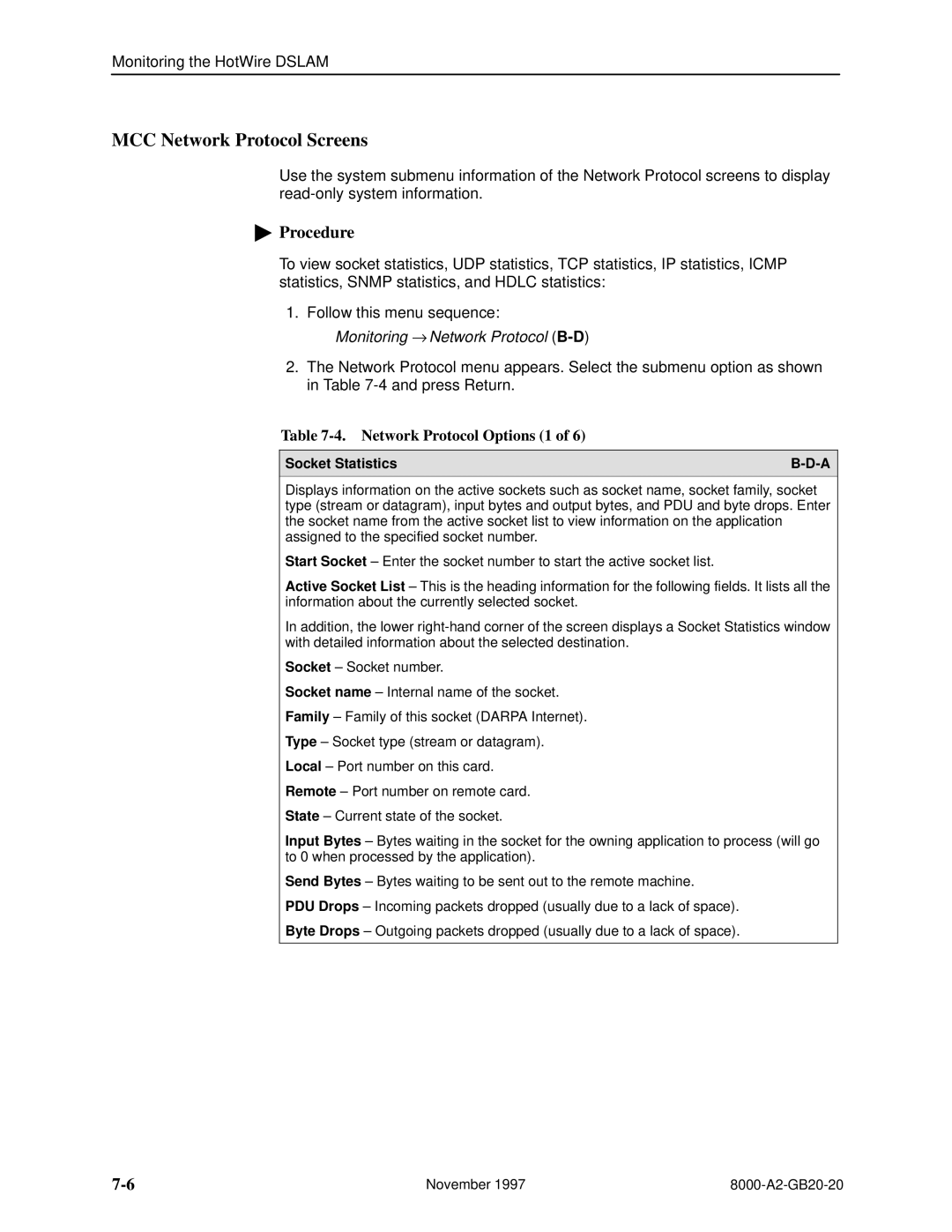
Monitoring the HotWire DSLAM
MCC Network Protocol Screens
Use the system submenu information of the Network Protocol screens to display
"Procedure
To view socket statistics, UDP statistics, TCP statistics, IP statistics, ICMP statistics, SNMP statistics, and HDLC statistics:
1. Follow this menu sequence:
Monitoring → Network Protocol
2.The Network Protocol menu appears. Select the submenu option as shown in Table
Table 7-4. Network Protocol Options (1 of 6)
Socket Statistics | |
|
|
Displays information on the active sockets such as socket name, socket family, socket type (stream or datagram), input bytes and output bytes, and PDU and byte drops. Enter the socket name from the active socket list to view information on the application assigned to the specified socket number.
Start Socket ± Enter the socket number to start the active socket list.
Active Socket List ± This is the heading information for the following fields. It lists all the information about the currently selected socket.
In addition, the lower
Socket ± Socket number.
Socket name ± Internal name of the socket.
Family ± Family of this socket (DARPA Internet).
Type ± Socket type (stream or datagram).
Local ± Port number on this card.
Remote ± Port number on remote card.
State ± Current state of the socket.
Input Bytes ± Bytes waiting in the socket for the owning application to process (will go to 0 when processed by the application).
Send Bytes ± Bytes waiting to be sent out to the remote machine.
PDU Drops ± Incoming packets dropped (usually due to a lack of space).
Byte Drops ± Outgoing packets dropped (usually due to a lack of space).
November 1997 |
